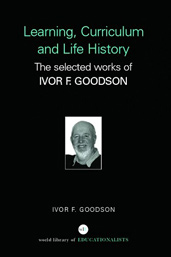Learning, Curriculum and Life Politics: the selected works of Ivor F. Goodson
Towards an Alternative Pedagogy
As well as broad principles of procedure it is also useful for teachers to have a working list of likely criteria for judging classroom activities. Raths recently attempted to produce such a list which included, for example, 'All other things being equal, one activity is more worthwhile than another if it permits children to make informed choices in carrying out the activity and to reflect on the consequences of their choices' (Raths 1971). But clearly lists of procedural principles and worthwhile activities might fall into the trap whereby pre-active definition prescribes interactive interpretation. To avoid this it is important to try to 'catch the spirit' in which such lists should be used. 'The problem is to produce a specification to which teachers can work in the classroom, and thus to provide the basis for a new tradition. That specification needs to catch the implication of ideas for practice' (Stenhouse 1975).
What might fulfil this need is a description of the kind of encounter which best characterizes the new tradition: an exemplar of the pedagogy in interaction. Peter Medway and I attempt to define an exemplar of what, for want of a better phrase, we called cooperative learning (Goodson and Medway 1975, p. 17).
Unauthorised Methods
Imagine this situation in a secondary school. A male teacher with a group in his classroom. He spends two mornings and two afternoons with them each week. He has set up a room that reflects many of his own interests and his predictions of what might grab his kids. There are charts and paintings on the wall, a trolley of assorted materials in the corner, some records, filmstrips, paint and brushes, and so on. It’s an environment deliberately set up for learning.
It’s noticeable that the teacher is relating very differently to different groups and individuals. Some he leaves alone; with others he sits down and looks at what they’ve done and makes vague situation-maintaining remarks, “yes, that’s good, go on”; with others he’s engaged in specific and animated point-by-point argument, explanation, planning, disagreement.
This situation exemplifies cooperative learning – cooperative, that is, between teacher and student. There may well also be cooperation between students, but we want to single out for attention here the type of relationship between the teacher and either individual students or small groups of friends. It’s cooperative in that teacher and student look together at a topic, each presenting to the other his own perception of it, both feeling their way through dialogue towards a common perception. Cooperation is not a euphemism, a gentler way of doing the same old thing by persuasion rather than imposition. We take the implied equality seriously, and the learning relationship, starting on the teacher’s side with a commitment to the principle of reciprocity, progresses to the point where reciprocity is experienced as a reality.
